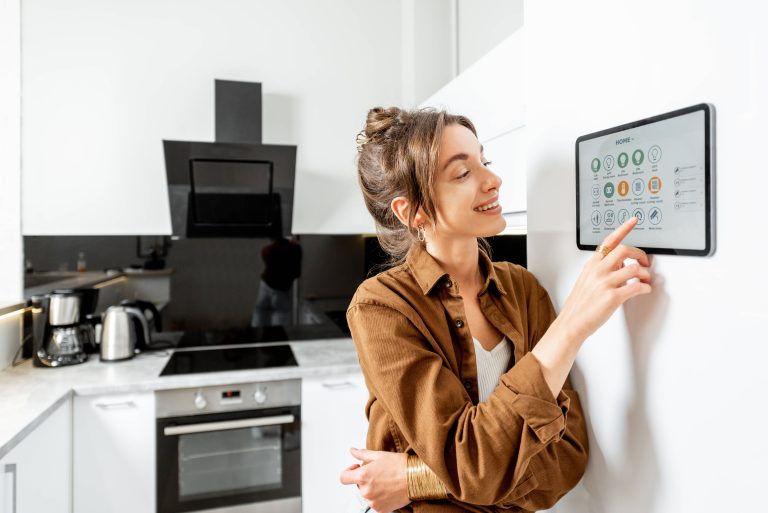
In recent years, multi-room audio systems have transformed the way we consume music and audio content at home. With advancements in wireless technology, it is now possible to fill your entire home with high-quality sound, controllable from any device. Whether you’re hosting a party, enjoying a quiet evening with a book, or just want background music throughout your home, a multi-room audio system can enhance your living experience significantly.
In this blog post, we’ll delve into everything you need to know about setting up a multi-room audio system. From selecting the right components to installing and optimizing your setup, this guide will ensure your home is equipped to deliver seamless, immersive audio in every room.
Understanding Multi-Room Audio Systems
A multi-room audio system allows you to play music and other audio in multiple rooms simultaneously or individually. The most advanced systems offer true synchronization, ensuring that there is no lag or delay between rooms. The benefits of such a system include:
1. Convenience: Control music from any room using a smartphone, tablet, or voice control.
2. Flexibility: Play different music in different rooms or the same music throughout the house.
3. Sound Quality: High-quality audio options ensure rich, clear sound wherever you are.
Preparing for Your Multi-Room Audio System
Before diving into hardware, it’s essential to plan your system carefully.
1. Assess Your Needs
Consider the following questions:
– How many rooms do you want to include in your system?
– What kind of audio sources do you use most frequently (streaming services, vinyl records, CDs, etc.)?
– Are you looking for high-fidelity sound in specific rooms, or is basic audio quality sufficient throughout?
– What is your budget for the entire system?
2. Choose Your Ecosystem
Investing in a specific ecosystem can streamline the process and ensure compatibility. Popular ecosystems include:
– Sonos: Known for its ease of use and sound quality, Sonos offers a range of speakers that can be grouped together and controlled via an app.
– Google Home/Nest Audio: Integrates seamlessly with Google Assistant, offering voice control and a variety of speaker options.
– Amazon Echo/Alexa: Compatible with numerous third-party speakers, Amazon’s ecosystem offers robust voice control and flexibility.
– Apple HomePod: For those heavily invested in the Apple ecosystem, HomePod provides high-fidelity sound and seamless integration with Apple devices.
3. Network Considerations
A reliable Wi-Fi network is crucial for a multi-room system. Ensure your network has adequate coverage and bandwidth to support simultaneous streams across multiple devices. A mesh Wi-Fi system can provide consistent coverage and reduce dead zones throughout your home.
Selecting and Installing Your Components
1. Speakers
The core components of your system will be the speakers. Generally, there are three types of speakers to consider:
– Standalone Wireless Speakers: Offers the greatest flexibility and ease of installation. Examples include Sonos One, Google Nest Audio, and Amazon Echo.
– Soundbars: Ideal for enhancing your TV audio while integrating with your multi-room setup. Many modern soundbars have multi-room audio capabilities.
– Built-in or In-wall Speakers: Best for a clean, unobtrusive setup but require professional installation.
2. Hub or Controller
While most ecosystems don’t require a central hub, having one can improve performance and reliability, especially in larger homes. For instance, Sonos offers the Sonos Bridge and Boost, whereas Amazon’s Echo devices can act as Zigbee hubs.
3. Source Devices
Ensure your source devices are compatible with your chosen ecosystem. This typically includes smartphones, tablets, computers, and streaming devices like Google Chromecast or Apple TV.
Setting Up Your System
1. Position Your Speakers
Strategically place your speakers for optimal sound coverage. Here are some tips for speaker placement:
– Avoid placing speakers directly on the floor or behind large objects.
– For in-wall or ceiling speakers, consider professional installation to ensure optimal placement and wiring.
– For soundbars, center them below or above your TV.
2. Connect to Your Network
Follow the manufacturer’s instructions to connect your speakers and devices to your Wi-Fi network. Most systems offer a companion app that simplifies the setup process by guiding you step-by-step.
3. Group and Sync Your Speakers
Use the app to group and sync your speakers. This allows you to control multiple speakers simultaneously, play different music in different rooms, or synchronize the same audio throughout your home. Test the synchronization by playing the same track in different rooms and making sure there are no delays.
4. Configure Voice Control (Optional)
If your system supports voice control, you can set up voice assistants like Google Assistant, Amazon Alexa, or Siri. This allows you to control your system hands-free, adjust volume, skip tracks, and more with simple voice commands.
Optimizing Your Multi-Room Audio Experience
1. Fine-Tune Sound Settings
Most apps offer equalizers or sound settings to fine-tune the audio for each room. Adjust bass, treble, and other settings to suit your preferences and the acoustics of each room.
2. Create Playlists and Favorites
Organize your music library into playlists and save your favorite stations for quick access. This can streamline the process of picking music for different occasions and rooms.
3. Explore Advanced Features
Many systems offer advanced features like stereo pairing, subwoofer integration, and multi-room party mode. Explore these options to maximize your system’s potential.
4. Regular Updates
Ensure your system’s firmware is always up to date. Manufacturers release updates that improve performance, add new features, and fix bugs.
Conclusion
Setting up a multi-room audio system can transform the auditory landscape of your home, providing seamless, high-quality sound throughout. By carefully planning your setup, selecting the right components, and optimizing your system, you can create an immersive audio experience that enhances your everyday living.
Invest in a reliable ecosystem, ensure robust network coverage, and take the time to fine-tune your system for the best performance. Whether you’re an audiophile seeking perfect sound quality or someone who simply loves the convenience of music in every room, a multi-room audio system is a worthwhile addition to any smart home. Happy listening!







